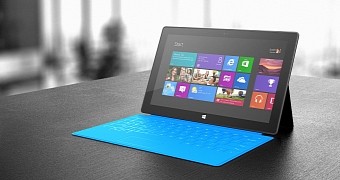Microsoft’s most recent Windows version is called Windows 10 S and is limited to apps published in the Windows Store, making many people believe that it’s nothing more than a successor to Windows RT.
Launched in 2012, Windows RT was developed for ARM chips and was also limited to apps in the Windows Store. At first glance, there’s no doubt that Windows 10 S and Windows RT are based on a similar approach, and even Microsoft’s strategy seems to be similar.
Both Windows versions launched with Store limitations, they come with a dedicated Office version, and Microsoft is using Surface devices as pioneers to show the capabilities of the platform.
But if you’re asking Terry Myerson, Microsoft's executive vice president of the Windows and devices group, Windows 10 S is just going to succeed because it’s different from what the company did with Windows RT.
“There are things that are distinctly different. RT ran on ARM underpowered processors. This is going to run on every class of hardware. There are some low-spec devices it will run on, but it will also run on the Surface Laptop, which is a beautiful premium device,” Myerson said in an interview with TIME.
You can upgrade if you want
Myerson went on to explain that as compared to Windows RT, Windows 10 S provides users with a critical option: they can upgrade to Windows 10 Pro should they want to unlock the full capabilities of the operating system.
“If you buy a Windows 10 S device, you can switch to Windows Pro. That's a big difference versus, you just buy it and you get what you get. So now you have a performance system, you have a way to say ‘Okay, I don't want these constraints, I want to go out into the open world.’ There are a lot more apps in the Windows Store now than there was. This version of Windows is more popular than Windows 8,” he said.
The Windows boss says Microsoft is learning from its past mistakes and it doesn’t want to repeat the Windows RT disaster once again, pointing out that, in the end, the purpose of these platforms is also different. Windows RT was mostly aimed at consumers, while with Windows 10 S, Microsoft is clearly targeting the education sector, where partners can help boost adoption with a growing range of devices.

 14 DAY TRIAL //
14 DAY TRIAL //